Perma Dry Waterproofing Blog
Do you have water in your basement or crawl space? Is there mold or mildew affecting the air quality in your home? It's likely you need basement or crawl space drainage. Perma Dry offers a wide variety of common sense solutions to your wet basement or crawl space problems. Learn more here in our blog. When you're ready, give us a call and schedule an appointment.
Call for Inquiry
Send An Email
Get A Free Quote
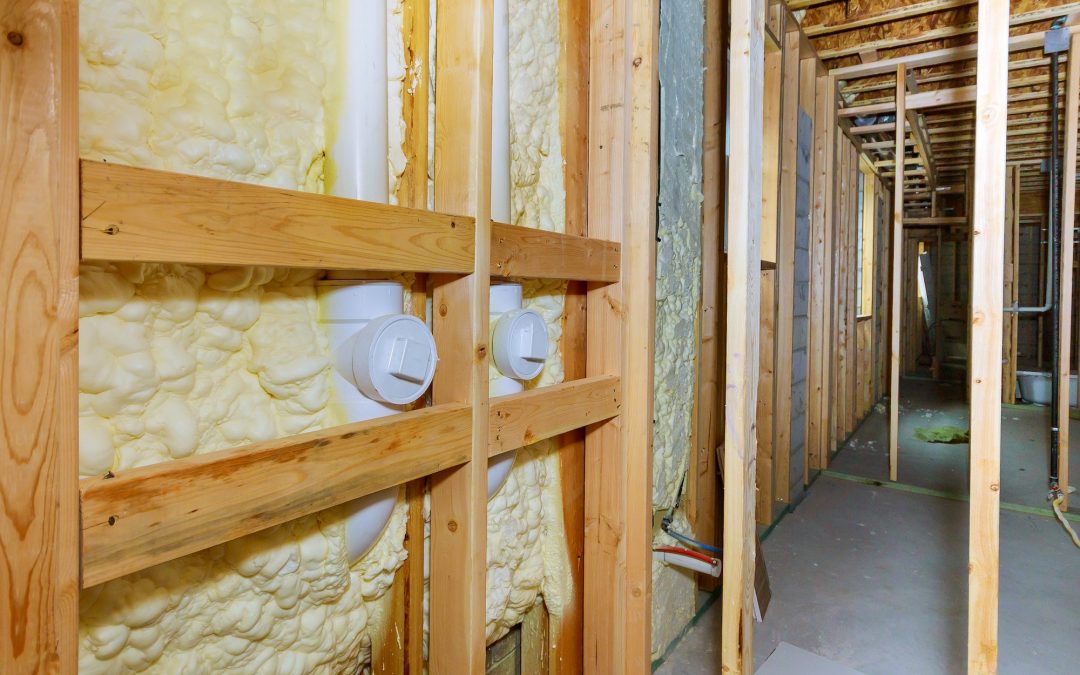
Understanding Different Basement Waterproofing Methods
Basement waterproofing is an important step for many homeowners. Because basements are often prone to water damage, it is important to take the right measures to protect your home from moisture and flooding. There are several different waterproofing methods that can be used, depending on the severity of the problem and the type of basement you have.
Interior Basement Waterproofing
Interior basement waterproofing is a process of sealing the interior walls and floor of a basement to prevent water from entering. This is usually done by applying a waterproofing compound to the walls and floor of the basement, which can be either a paint-on or spray-on solution. This type of waterproofing is best for basements that have a relatively low water table and no major cracks in the walls or floor.
A paint-on solution is the most common type of interior waterproofing and consists of a liquid rubber-like material that is applied to the walls and floor of the basement. This material will create a waterproof barrier that will prevent water from entering the basement. Additionally, it is important to check the walls and floor for any cracks or gaps and seal them with a sealant before applying the waterproofing material.
Exterior Basement Waterproofing
Exterior basement waterproofing is a process of sealing the exterior walls of a basement to prevent water from entering. This is usually done by applying a waterproofing membrane to the exterior walls of the basement, which can be either a paint-on or spray-on solution. This type of waterproofing is best for basements that have a high water table and large or multiple cracks in the walls.
A paint-on solution is the most common type of exterior waterproofing and consists of a rubber-like material that is applied to the exterior walls of the basement. This material will create a waterproof barrier that will prevent water from entering the basement. Additionally, it is important to check the walls for any cracks or gaps and seal them with a sealant before applying the waterproofing material.
Sump Pump Installation
Sump pumps are an important part of any basement waterproofing system. These pumps are installed in the basement and are designed to collect and remove any water that enters the basement, thus preventing the basement from flooding. Sump pumps should be installed by a professional to ensure that they are installed correctly and are properly maintained.
There are two types of sump pumps available, submersible and pedestal. Submersible pumps are installed in a pit in the basement and are designed to pump out any water that collects in the pit. Pedestal pumps are installed above the pit and are designed to pump out any water that directly enters the basement.
Window Well Installation
Window wells are an important part of any basement waterproofing system. These wells are installed around basement windows to collect and drain any water that enters the basement, thus preventing the basement from flooding. Window wells should be installed by a professional to ensure that they are installed correctly and are properly maintained.
Window wells are made of plastic or metal and are designed to fit snugly around the window. They should be installed with a waterproofing membrane to prevent water from entering the basement. Additionally, the well should be checked periodically for any cracks or damage and repaired if necessary.
Basement waterproofing is an important step for many homeowners to take in order to protect their homes from water damage and flooding. By understanding the different basement waterproofing methods and taking the necessary steps to protect your basement, you can ensure that your basement is safe and dry for years to come.
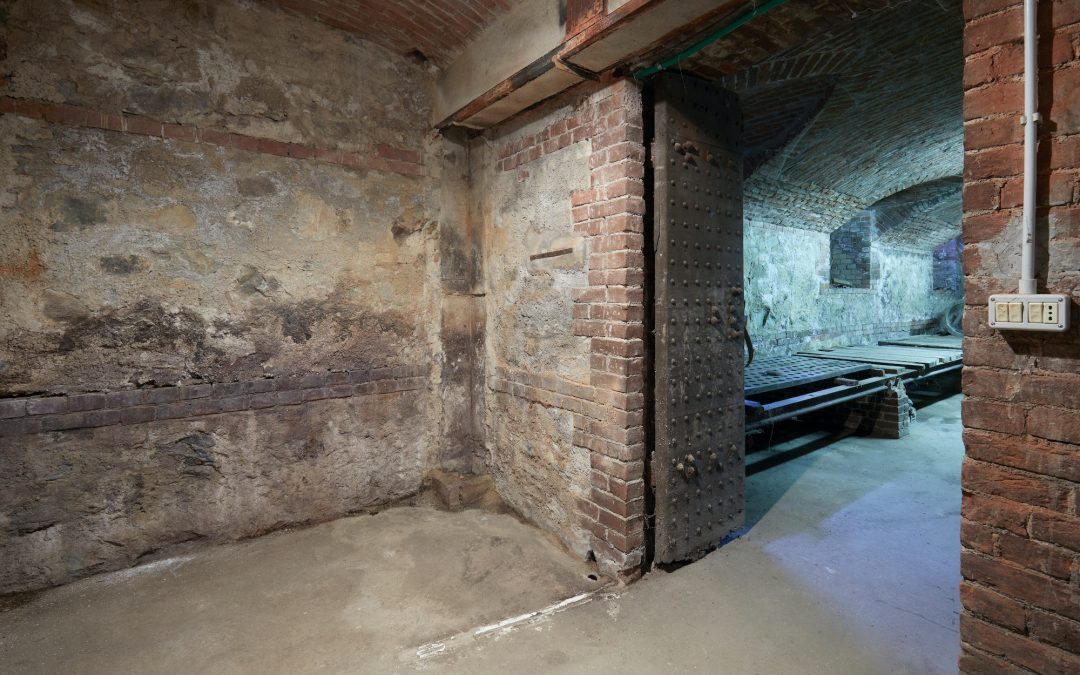
Basement Flooding Cleanup: Steps to Restore Your Space
Basement flooding is an unfortunate reality for many homeowners. Flooding can cause extensive damage to your home, and the cleanup process can be both challenging and time-consuming. Fortunately, there are steps that you can take to restore your basement space and keep your family safe and healthy. In this article, we will discuss the steps you need to take to successfully clean up and restore your basement after a flood.
Step 1 – Assess the Damage
The first step to basement flooding cleanup is to assess the damage. Immediately following the flood, it is important to determine what kind of water is in your basement – whether it is clean, gray, or black water. Clean water is considered safe and can be disposed of quickly. Gray water is slightly contaminated and can come from washing machines or dishwashers. Black water is highly contaminated and can come from sewage or other sources. Once you have determined the type of water, you will need to assess the extent of the damage to determine the best course of action.
Step 2 – Remove the Water
Once you have determined the extent of the damage, the next step is to remove the standing water from your basement. This can be done manually using buckets, or with a sump pump. If the water is contaminated, it will need to be disposed of properly. You may also need to use a wet-dry vacuum to remove any remaining water, and a mop and cleaning supplies to clean the floors and walls.
Step 3 – Dry Out Your Basement
After the water is removed, you will need to dry out your basement. This can be done by opening windows and using fans and dehumidifiers. It is important to dry out the area as quickly as possible to prevent the growth of mold and mildew. You may need to rent a commercial dehumidifier if the air is not circulating well.
Step 4 – Clean and Disinfect
Once the area is dry, you will need to thoroughly clean and disinfect all affected surfaces. This should include walls, floors, furniture, and any other items that have been damaged. It is important to use a disinfectant cleaner, since flood waters can contain bacteria and other contaminants. You may also need to replace any carpeting or flooring that was damaged.
Step 5 – Make Repairs and Prevent Future Damage
The final step is to make any necessary repairs and take steps to prevent future damage. This could include repairing cracks in the foundation, installing a sump pump, or waterproofing your basement. If your basement has suffered extensive damage, you may need to hire a professional to help you make the necessary repairs.
Basement flooding can be a major inconvenience, but it doesn’t have to be a disaster. By following these steps, you can restore your basement space and protect your family from potential health hazards. If you have any questions about the cleanup process or need help with repairs, contact Perma-Dry Waterproofing for expert advice and assistance.
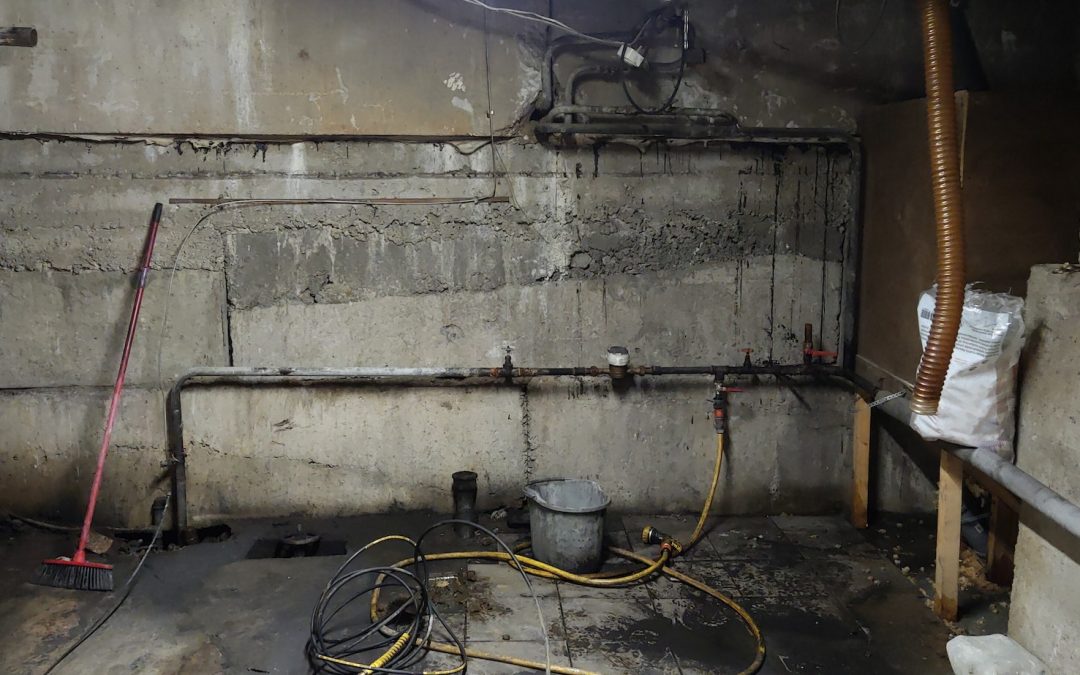
Foundation Repair for Settling and Sinking Structures
Foundation repair is a necessary process for any home or building that is settling or sinking. This process helps to ensure that the structure is safe and stable, and that it can remain standing for years to come. Foundation repair can be a costly and time-consuming process, but it is worth it in the long run. In this article, we will discuss the importance of foundation repair, common causes of settling and sinking, and some of the methods used to repair foundations.
Importance of Foundation Repair
Foundation repair is an essential process for any home or building that is settling or sinking. When a structure settles or sinks, it can put the building’s occupants in danger, as the structure can become unstable and potentially collapse. Foundation repairs help to prevent such accidents by restoring the stability of the structure and ensuring that it can remain standing for years to come. Foundation repairs also help to ensure that the building is safe for its occupants, as it prevents the structure from leaning, which can cause the building to be unsafe for its occupants.
In addition, foundation repairs can also help to maintain the value of the structure. When a building settles or sinks, it can cause the value of the building to decrease significantly. By repairing the foundation, the value of the structure can be maintained, as the structure is now stable and safe.
Common Causes of Settling and Sinking
There are many factors that can cause a building to settle or sink. The most common causes of a settling or sinking structure are poor soil conditions and inadequate foundation support. Poor soil conditions can occur due to water or soil erosion, or due to poor construction methods. Inadequate foundation support can be caused by a variety of issues, such as a lack of reinforcement or a lack of proper drainage.
In addition, some structures can also settle or sink due to natural causes, such as earthquakes or floods. These events can cause the soil to be displaced or washed away, which can cause the structure to be unstable.
Methods of Foundation Repair
There are a variety of methods used to repair a foundation. The most common methods include:
- Piering: Piering is a method of foundation repair in which steel or concrete piers are installed beneath the foundation to support the structure and prevent further settling or sinking.
- Slabjacking: Slabjacking is a method of foundation repair in which a mixture of cement and other materials is injected beneath the foundation to fill voids and prevent further settling or sinking.
- Crawl Space Repair: Crawl space repair is a method of foundation repair in which the crawl space beneath the foundation is sealed and insulated to prevent further settling or sinking.
These methods of foundation repair can help to ensure that the structure remains safe and stable for years to come.
Tips for Preventing Settling and Sinking
In addition to repairing a settling or sinking foundation, there are some steps that can be taken to prevent such an issue from occurring in the first place. These steps include:
- Proper Drainage: Proper drainage is essential for the prevention of settling and sinking. Make sure that the soil around the foundation is adequately drained to prevent water from collecting beneath the foundation.
- Reinforcement: Reinforcing the foundation can help to prevent settling and sinking. Make sure that the foundation is properly reinforced with steel or concrete to prevent the structure from becoming unstable.
- Regular Maintenance: Regular maintenance of the foundation is essential for the prevention of settling and sinking. Make sure to inspect the foundation regularly and make any necessary repairs as soon as possible.
By following these tips, you can help to ensure that your structure remains safe and stable for years to come.
Conclusion
Foundation repair is an essential process for any home or building that is settling or sinking. By taking the necessary steps to repair a foundation, you can help to ensure that the structure is safe and stable for years to come. In addition, there are some steps that can be taken to prevent settling and sinking from occurring in the first place, such as proper drainage and reinforcement. If you have any questions about foundation repair or would like to learn more, please contact PermaDry Waterproofing today.
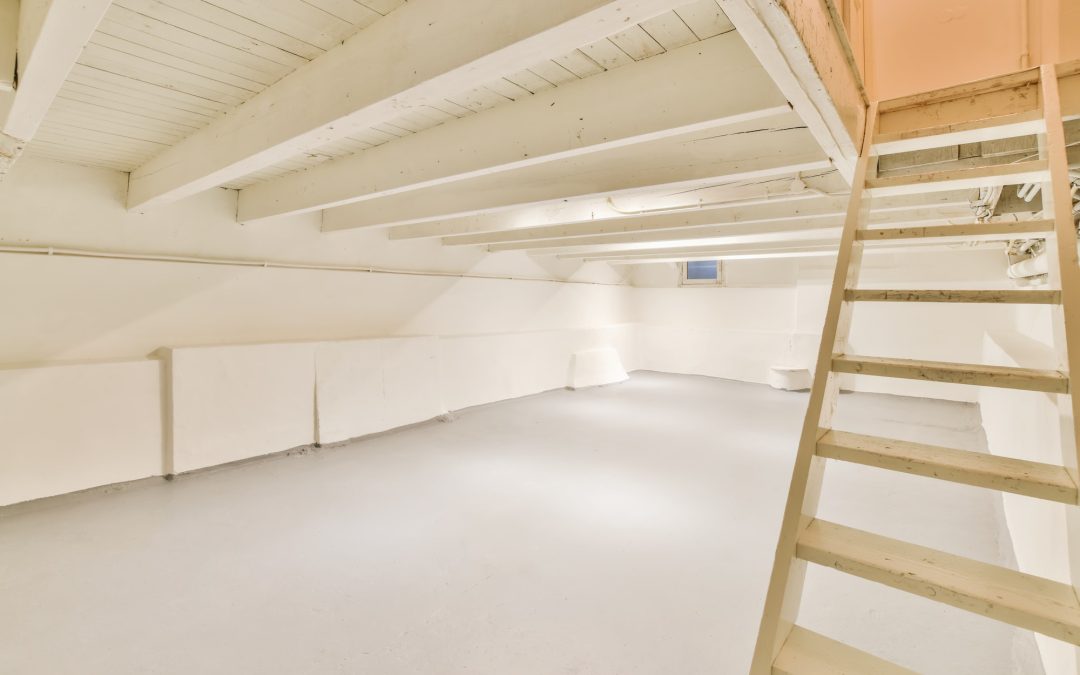
Waterproofing vs. Water Management: Understanding the Difference for Your Basement
Waterproofing and water management are two essential components of any basement renovation project. Both are necessary to ensure a healthy, dry environment in the basement, but understanding the difference between them is important to make sure you get the best possible outcome. Waterproofing seals off the basement from moisture while water management focuses on routing water away from the house.
What is Waterproofing?
Waterproofing involves using a variety of products to seal off the basement from moisture. This can include installing a waterproof membrane on the concrete walls, applying waterproof coatings or paints, or using specialized waterproofing products like sealed drains and sump pumps. Waterproofing is an essential part of any basement renovation project because it helps keep moisture out of the basement and prevents mold and mildew from growing.
The most effective way to waterproof a basement is to install a membrane on the walls. This will prevent moisture from seeping through any cracks or other openings in the foundation. It also helps keep out radon gas, which can be hazardous if breathed in over a long period of time.
What is Water Management?
Water management is the process of routing water away from your home so that it doesn’t accumulate around your foundation. This includes making sure gutters, downspouts, and drains are all working properly so that any rainwater or melted snow is directed away from your home. It may also involve installing drainage systems such as French drains or sump pumps to help channel away excess water.
Water management should be done in conjunction with waterproofing for maximum effectiveness. Properly functioning gutters and downspouts will help keep water away from the foundation, while a waterproof membrane will stop any moisture that does make it through from entering your home.
Which One Should I Do First?
When it comes to waterproofing vs. water management for your basement, it’s important to do both at the same time. If one aspect is neglected, it could lead to serious problems in the future. For example, if you only waterproof your basement but don’t manage water properly outside of your home, then you could still have issues with flooding or mold growth due to excessive moisture buildup.
It’s best to consult an expert before undertaking any kind of waterproofing or water management project. They can help you determine what needs to be done first and how best to go about completing both tasks.
What Are The Benefits Of Doing Both?
- Protection From Moisture:
Doing both will help protect your home from excessive moisture, which can cause mold growth and structural damage over time. - Safer Home Environment:
By keeping moisture out of your home, you can create a safer environment for yourself and your family by reducing potential health risks associated with mold and mildew exposure. - Increased Home Value:
Having a dry basement can help increase the value of your home since buyers are often looking for houses that have been well-maintained.
Conclusion
Waterproofing and water management are two essential components of any basement renovation project. Doing both correctly can help protect your home from excessive moisture buildup and create a healthier living environment. It is important to consult an expert before beginning any kind of project so that they can advise you on what needs to be done first and how best to go about completing both tasks. To learn more about how PermaDry Waterproofing can help with all aspects of waterproofing and water management for your basement, please visit our website at
PermaDry Waterproofing.

Exploring Different Types of Basement Drainage Systems
When it comes to waterproofing your basement, it’s important to understand the different types of drainage systems available. Installing the right drainage system can help protect your basement from water damage, mold, and other problems associated with moisture. In this article, we’ll explore the various options available when it comes to basement drainage systems.
Interior Drainage Systems
Interior drainage systems are one option for waterproofing your basement. This option involves installing a drainage system on the inside of your basement walls. The system is designed to collect water that enters the basement and then direct it to a sump pump or other area outside of the home. This type of drainage system is typically installed along the perimeter of the basement floor, although some systems may also be installed along the walls.
The main advantage of an interior drainage system is that it can be installed without having to excavate the ground outside of the home. This can save a considerable amount of time and money. Additionally, interior drainage systems are relatively easy to maintain and repair. The downside of this option is that it may not be able to handle large amounts of water, especially if the sump pump is not able to keep up with the water entering the basement.
Exterior Drainage Systems
Exterior drainage systems are also an option for waterproofing your basement. This option involves installing a drainage system outside of the home, typically around the perimeter of the foundation. The system is designed to collect water from the soil, direct it away from the home, and then discharge it to an area away from the foundation. This type of drainage system is typically more effective at collecting and discharging large amounts of water, since it is not limited by the capacity of the sump pump.
The main advantage of an exterior drainage system is that it can handle larger amounts of water. Additionally, it can be used to prevent water from entering the basement by diverting it away from the foundation. The downside of this option is that it requires excavation of the ground around the foundation, which can be costly. Additionally, exterior drainage systems may require more maintenance and repairs than interior drainage systems.
Gutters and Downspouts
Gutters and downspouts are another option for waterproofing your basement. This option involves installing gutters and downspouts around the perimeter of the roof. The gutters collect water from the roof and direct it to the downspouts, which then carry the water away from the home. This system helps to prevent water from entering the basement by diverting it away from the foundation.
The main advantage of gutters and downspouts is that they are relatively inexpensive and easy to install. Additionally, they can be used to collect and divert large amounts of water. The downside of this option is that it requires regular maintenance, such as cleaning the gutters and downspouts, to ensure that they are functioning properly.
French Drains
French drains are also an option for waterproofing your basement. This option involves installing a trench filled with gravel or other type of material around the perimeter of the home. The trench is designed to collect water from the soil and direct it away from the foundation. This system is typically more effective at collecting and discharging large amounts of water.
The main advantage of a French drain is that it is relatively inexpensive and easy to install. Additionally, it can be used to collect and divert large amounts of water. The downside of this option is that it requires regular maintenance, such as cleaning out the trench, to ensure that it is functioning properly.
When it comes to waterproofing your basement, there are a variety of options available. Each option has its own advantages and disadvantages, so it is important to consider your specific needs and budget before making a decision. If you are looking for an effective and affordable solution, Permadry Waterproofing offers a wide range of basement drainage solutions.
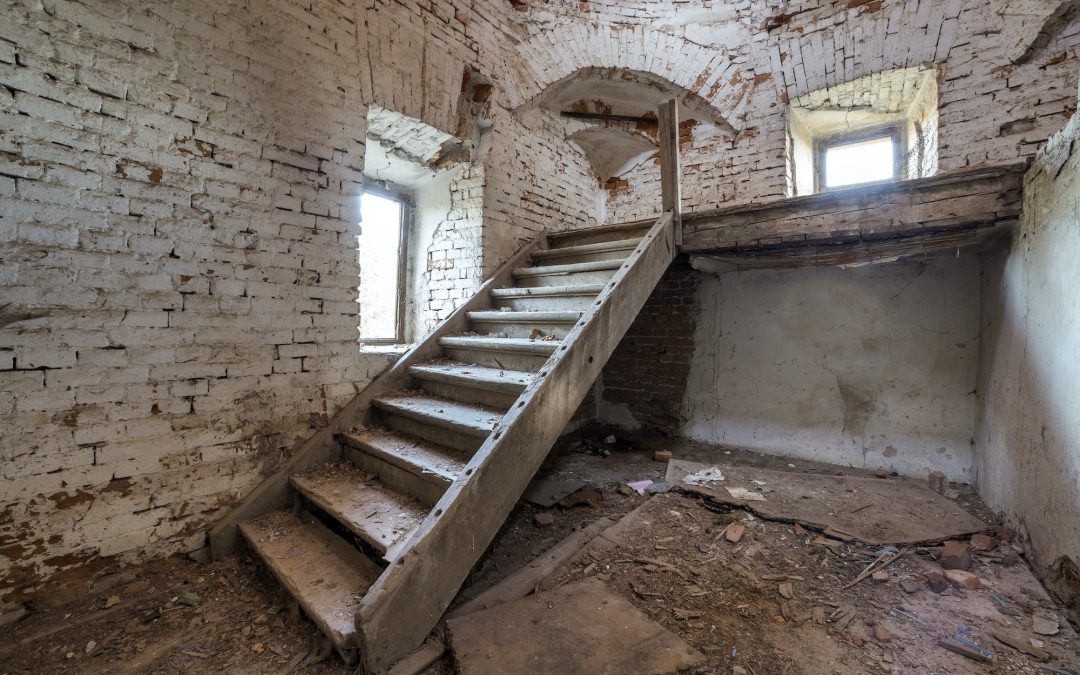
Basement Waterproofing: DIY vs. Hiring a Professional
Basement waterproofing is a critical part of home maintenance and can save homeowners from costly water damage in the future. Taking the plunge and deciding to waterproof your basement can be intimidating, with a wide range of options available. Do-it-yourself (DIY) methods are cheaper and more convenient for homeowners who have the time to dedicate to the project, while hiring a professional is a more effective and long-term solution that can save you time and money in the long run. In this article, we will compare and contrast DIY and professional basement waterproofing and help you make the best decision for you and your home.
DIY Basement Waterproofing
DIY basement waterproofing is a popular choice for homeowners who are looking for a cost-effective and straightforward solution. With some research, the right tools, and a bit of elbow grease, homeowners can waterproof their basement and save a significant amount of money. In addition, DIY basement waterproofing is often a more convenient choice since you can work around your own schedule and at your own pace.
However, DIY waterproofing may not always be the right solution for every homeowner. DIY waterproofing requires a great deal of time and effort, and it can be challenging for those who lack experience in home maintenance and do not have the necessary tools or resources. DIY basement waterproofing also tends to be a short-term solution, and it may not always provide adequate protection from water damage.
Hiring a Professional
For homeowners who are looking for a more reliable and permanent solution to waterproofing their basement, hiring a professional is the best way to go. Professional waterproofers have the necessary expertise and tools to ensure that your basement is fully waterproofed and protected from water damage. Professional waterproofers are also able to identify potential sources of water damage and can provide long-term solutions that are tailored to the specific issues and conditions of your home.
The main downside to hiring a professional is the cost. Professional basement waterproofing tends to be more expensive than DIY methods, but the quality and longevity of the work are considerably better. Also, keep in mind that the cost of hiring a professional is often more cost-effective in the long run due to the greater protection from water damage.
Choosing the Right Option for You
There is no one-size-fits-all solution to basement waterproofing. The best way to decide which option is right for you is to assess your own situation and weigh the pros and cons of each option. If you have the time and the resources to do the job yourself, then DIY basement waterproofing may be the right choice for you. However, if you want a reliable and permanent solution, then hiring a professional is the best way to go.
Before making your final decision, it is always best to do your research and find a trustworthy and reliable professional who can provide the best solution for you and your home. Perma-Dry Waterproofing provides quality and comprehensive basement waterproofing services that are tailored to the specific needs of your home. They use the latest technology and techniques to ensure that your basement is fully waterproofed and protected from water damage. To learn more about their services and to get a free estimate, contact Perma-Dry Waterproofing today.
Conclusion
Basement waterproofing is an important part of home maintenance and can save you from costly water damage in the future. There are a number of options available, including DIY methods and professional services. DIY basement waterproofing can be a cost-effective and convenient solution for those who have the time to dedicate to the project, while professional waterproofers offer a more reliable and permanent solution. Ultimately, the best option for you will depend on your own situation and resources. Do your research and contact a professional to ensure that your basement is adequately waterproofed and protected from water damage.

The Essential Guide to Basement Waterproofing Solutions for Every Home
Waterproofing your basement is an important step in protecting your home from the damaging effects of moisture. Whether you are dealing with a minor seepage problem or a major flooding issue, investing in a reliable waterproofing solution can save you time and money in the long run. In this guide, we’ll discuss the different types of basement waterproofing solutions for every home and why they are important.
Basement Waterproofing Basics
Basement waterproofing is a process that helps to prevent water from entering your basement by utilizing a variety of methods and materials to create a barrier. This barrier is designed to keep water out and maintain the integrity of the foundation of your home.
The most common type of basement waterproofing is an exterior waterproofing system. This involves digging around the foundation of your home, installing a waterproof membrane, and then backfilling with gravel or sand. This method is often used as a preventative measure against future water damage.
Interior systems are also available and involve applying sealant or paint to the walls and floors of your basement in order to reduce the amount of water that can enter your home. This method is often used when dealing with existing water damage or seepage issues.
Why Basement Waterproofing Is Important
Water damage can be one of the most costly repairs you will ever have to make on your home. Not only can it cause structural damage, but it can also lead to mold and mildew growth which can be hazardous to your health. Investing in a reliable basement waterproofing solution now can help protect your home against costly repairs down the line.
Basement waterproofing also helps protect valuables stored in your basement such as furniture, electronics, artwork, and other items that could potentially be ruined by water damage. It also helps maintain the structural integrity of your home by keeping water away from its foundation.
Types Of Basement Waterproofing Solutions For Every Home
- Exterior Drainage System:
An exterior drainage system involves digging around the perimeter of your home and installing a drainage pipe that directs water away from the foundation. This system also utilizes gutters and downspouts to help control runoff from rainwater as well as surface water.
- Sump Pump:
A sump pump is an electric device installed in a hole at the lowest point in your basement. It collects any water that enters through cracks and directs it away from your house through pipes. Sump pumps are an effective way to keep excess moisture out of your basement.
- Interior Sealants:
Interior sealants are applied directly to your walls and floors in order to prevent water from entering through cracks or joints. These sealants are available in both paint-on formulas as well as spray-on versions.
- Waterproof Membrane:
A waterproof membrane is a plastic sheet that is installed on the outside of your foundation wall. It acts as a barrier between incoming moisture and your home’s interior. This type of membrane comes in various thicknesses depending on how much protection you need.
Finding The Right Solution For Your Home
When it comes to finding the right basement waterproofing solution for your home, it’s important to consider both interior and exterior solutions as well as any associated costs involved. It’s also important to consult with a reputable contractor who has experience installing these systems so that you can be sure you’re getting the best protection possible for your investment.
For more information about basement waterproofing solutions for every home, visit PermaDry Waterproofing at https://www.permadrywaterproofing.com/#phone. They have experienced professionals who can help guide you through the process so that you get the right solution for your needs.

Waterproofing Your Basement: Steps to Take Before Finishing the Space
Basements are a great way to expand your living space and add value to your home. But before you can start planning the next big project, you need to ensure that your basement is waterproof. Waterproofing your basement is essential to prevent water damage, structural damage, and the growth of mold and mildew. In this article, we’ll explore the importance of waterproofing your basement and the steps you should take before you finish the space.
1. Find the Source of Water Intrusion
Waterproofing your basement starts with finding the source of water intrusion. This is best done by a professional as they can detect the source of any water leaks and seal them. Common sources of water intrusion include cracks in the foundation, gaps around windows and doors, and below-grade plumbing connections. It’s important to find and seal all sources of water intrusion before you start the waterproofing process.
If you’re not sure where to start, it’s best to contact a professional waterproofing contractor who can inspect your basement and recommend the best course of action. They will be able to identify and repair any existing water leaks and provide you with a comprehensive waterproofing solution.
2. Clean and Repair the Basement
Once you have identified the source of water intrusion, it’s important to clean and repair the basement. This includes removing any damaged drywall, insulation, and other materials. It’s also important to inspect the walls and floor for signs of water damage and address any structural issues. By doing this, you can ensure that the basement is properly prepared for waterproofing.
It’s also a good idea to inspect the windows and doors for air leaks. This is especially important if you plan on finishing the basement as air leaks can lead to increased humidity and moisture. Sealing any air leaks will help reduce the potential for water damage.
3. Invest in a Waterproofing System
Once the basement is clean and repaired, it’s time to invest in a waterproofing system. There are many waterproofing systems on the market, so it’s important to select one that meets your needs and budget. The most common type of waterproofing system is a liquid membrane system, which is applied to the outside of the foundation walls. This system creates a barrier between the foundation and the interior walls and is designed to keep water out.
It’s important to select a waterproofing system that is designed for your specific basement. For example, if you live in an area with high levels of humidity, you may need a different type of waterproofing system than someone who lives in a dry climate. A professional waterproofing contractor can recommend the best waterproofing system for your needs.
4. Install a Sump Pump
A sump pump is an essential part of any basement waterproofing system. The sump pump is designed to collect and remove water from the basement before it can cause damage. It is typically installed in the lowest part of the basement and is connected to a drainage system. It is important to select a sump pump that is designed for your specific basement, as some models are designed to handle more water than others.
A sump pump is an essential part of any basement waterproofing system and should be installed as soon as possible. Installing a sump pump can help prevent water damage, structural damage, and the growth of mold and mildew. It can also help to reduce energy costs by keeping the basement dry and providing better insulation.
5. Consider Finishing the Basement
Once you have taken the steps to waterproof your basement, you may want to consider finishing the space. Finishing the basement can add value to your home and provide additional living space. When finishing the basement, it’s important to make sure that the space is properly insulated and sealed. This will help to keep the basement dry and reduce the potential for water damage.
When considering finishing the basement, it’s important to check with your local building codes. You may need to obtain a permit before starting the project and make sure that the space meets local health and safety standards. It’s also important to work with a contractor who is experienced in basement finishing, as they can help ensure that the space meets all local codes and regulations.
Waterproofing your basement is essential to preventing water damage, structural damage, and the growth of mold and mildew. The steps outlined above can help you prepare your basement for waterproofing and finishing. If you’re unsure of what steps to take, it’s best to contact a professional waterproofing contractor. They will be able to provide you with a comprehensive waterproofing solution and help ensure that your basement is properly waterproofed and finished.
For more information on waterproofing your basement, contact Permadry Waterproofing today. Our team of experienced waterproofing professionals can provide you with a comprehensive waterproofing solution and help you protect your home from water damage.
{END ARTICLE – HTML MARKUP – 1000 WORD MINIMUM}
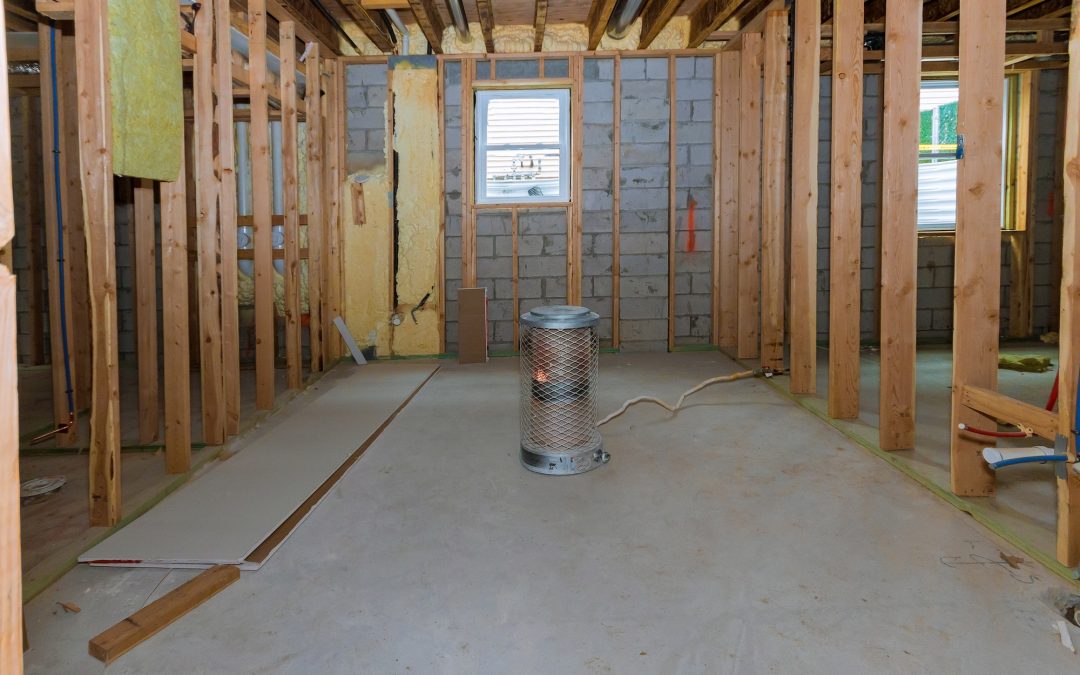
Basement Waterproofing: Addressing Exterior Landscaping Factors
Basement waterproofing is an important part of keeping your home safe and dry. Waterproofing prevents the seepage of water from the outside into your basement, which can lead to mold, mildew, and other damage. Exterior landscaping factors are important to consider when it comes to basement waterproofing, and addressing these factors can help to ensure that your basement remains safe and dry.
Slope and Drainage
The slope of the land around your home is a crucial factor when it comes to basement waterproofing. If the ground slopes towards your house, your basement is more likely to be flooded by excess rain water. Make sure the ground slops away from your house and towards a well-draining area, such as a nearby ditch or a drainage pipe. If the ground around your house doesn’t slope away, you can add fill dirt to create a slope.
Improving the drainage of the land around your home is also important when it comes to basement waterproofing. Make sure that nearby ditches, gutters, and drains are all functioning properly and not blocked by dirt or debris. If you can’t find any drains or ditches nearby, you may need to install a sump pump to ensure proper drainage.
Gutters and Downspouts
The gutters and downspouts of your home are important components of basement waterproofing. Make sure that your gutters are clean and free of debris, so that excess rain water can be properly channeled away from your home. If your gutters are clogged, you may need to invest in a gutter guard or install a larger gutter system to ensure proper drainage. Additionally, make sure that your downspouts are properly installed and pointed away from your home.
It’s also a good idea to invest in additional downspouts if your home only has a few. Having multiple downspouts will help to ensure that the water is channeled away from your home and not allowed to pool around your foundation. You can also install splash guards or underground drains near the downspouts to further improve drainage.
Grading and Landscaping
The grading and landscaping of the land around your home can also affect basement waterproofing. Make sure that the soil in your yard is graded away from your home, so that excess rain water can be channeled away from the foundation. If you need to add fill dirt to create a slope, make sure to use soil that won’t be easily washed away by rain.
It’s also important to maintain a landscaping plan that is conducive to basement waterproofing. Avoid planting trees and shrubs near your home, since their roots can cause foundation damage and allow water to seep into your basement. If you have to plant near your home, invest in plants that can tolerate wet conditions and don’t require a lot of water.
Caulking and Sealing
Sealing the cracks and gaps around your home is another important step in basement waterproofing. Make sure to check for any cracks in your foundation and seal them with a waterproofing sealant. You may also need to caulk around any windows, doors, and other openings to ensure that no water can get into your basement. Make sure to use a quality sealant that is designed for basement waterproofing.
It’s also important to check the sealant regularly and apply additional sealant as needed. You may need to apply additional sealant after heavy rainfall or if you notice any cracks or gaps in your foundation. Sealing your home is an important part of basement waterproofing and should not be overlooked.
Professional Help
For more serious basement waterproofing issues, it’s a good idea to consult a professional. A professional basement waterproofing contractor can provide a detailed inspection of your home and make any necessary repairs. They can also recommend additional products and techniques that may help to improve your basement waterproofing.
It’s also important to check that your contractor is experienced and properly licensed. Make sure to read reviews and ask for references before hiring a contractor. A professional basement waterproofing contractor can help to ensure that your basement remains safe and dry for years to come.
Overall, basement waterproofing is an important part of keeping your home safe and dry. Exterior landscaping factors are important to consider when it comes to basement waterproofing, and addressing these factors can help to ensure that your basement remains safe and dry. Consider these tips and consult a professional basement waterproofing contractor if needed, and you can keep your basement safe and dry for years to come. For more information, contact Perma-Dry Waterproofing today.
Dealing with Mold and Mildew in Your Wet Basement
Damp and humid basements can be a breeding ground for mold and mildew, which can cause a range of health problems, from asthma to allergies. If you are dealing with a wet basement, the most important thing is to take steps to prevent mold and mildew from occurring in the first place. Here are some tips on how to keep your basement clean and dry.
Identify and Resolve Water Issues
The first step to preventing mold and mildew in your basement is to identify and address any water issues. This could include fixing leaking pipes, sealing cracks in the foundation, and making sure your gutters are clean and functioning properly. If your basement has been flooded, you should have a professional inspect it to make sure there is no significant damage. An inspection will also help you determine if you need to install a sump pump or a dehumidifier to keep the air dry.
Once you have identified and fixed any water issues, you should also take steps to protect your basement from future water damage. This could include installing a vapor barrier on the walls and floors, and making sure your gutters are functioning properly and directing water away from your home. You may also want to invest in a waterproofing system to ensure your basement remains dry.
Maintain a Healthy Humidity Level
Maintaining a healthy humidity level in your basement is essential for preventing mold and mildew. You can buy a hygrometer to measure the humidity level in your basement. The ideal range is between 30 and 50 percent. If the humidity is too high, you can use a dehumidifier to reduce it. You should also make sure to ventilate your basement regularly to encourage air circulation. This will help prevent moisture build up and keep the air dry.
If you are dealing with a leaking basement, you may need to invest in a sump pump. This device is designed to pump water out of the basement and keep it from accumulating. You should also make sure to clean up any standing water in your basement as soon as possible. This will reduce the risk of mold and mildew growth.
Clean and Disinfect Regularly
It’s important to keep your basement clean and free of debris. This will help reduce the risk of mold and mildew growth. You should vacuum and mop regularly and use a disinfectant to kill any existing mold or mildew. You should also inspect your walls and floors for any signs of water damage or mold growth. If you notice any, it’s important to take steps to repair the damage and prevent further growth.
It’s also important to keep your basement clutter-free. Storing items on the floor or in damp areas can encourage mold and mildew growth. You should also remove any items that are no longer in use. This will help keep your basement clean and dry.
Call for Professional Help
If you are dealing with a wet basement, it’s important to call a professional for help. A waterproofing specialist can inspect your basement and recommend the best solutions for keeping it dry. They can also install a sump pump, waterproofing system, or dehumidifier to help keep your basement dry and prevent mold and mildew growth. If you are dealing with a significant mold or mildew problem, they can also recommend the best products for cleaning and disinfecting the area.
Dealing with mold and mildew in your wet basement can be difficult, but it is possible to keep it clean and dry. By following the tips above, you can help prevent mold and mildew growth and keep your basement free of dampness and musty odors. If you need help dealing with a wet basement, contact Perma-Dry Waterproofing for professional assistance.
Get in Touch
(206) 309-5147
Contact Us
Open Hours
7:30am - 5pm Weekdays
Closed Weekends
Our Office
608 SW 12th Street
Renton, WA 98057
Email Us
Email Us
